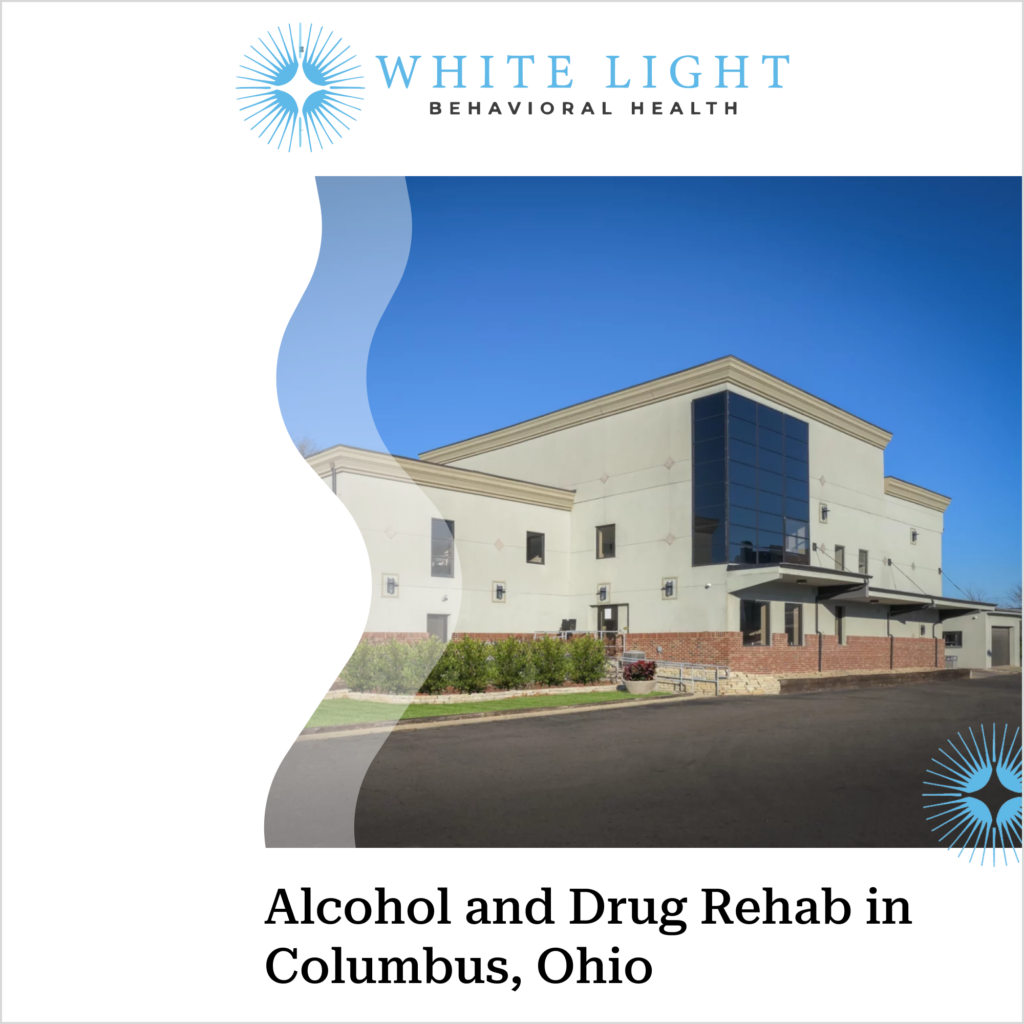What to Know About Lancaster: Population Culture Laws Politics Business and Healthcare

Lancaster operates within Ohio’s comprehensive demographic framework that encompasses 11,883,304 residents as of July 2024, making it the 7th most populous state in America with significant political, economic, and healthcare characteristics shaping local community life (US Census Bureau, 2024). The city’s political landscape reflects Ohio’s Republican dominance, where the party holds supermajorities in both state legislative chambers and controls all six statewide executive offices as of 2023, while recent voter initiatives approved recreational marijuana legalization with 57.1% support and abortion rights protections with 56.6% approval in November 2023 (Ballotpedia, 2023; Ohio Sec. of State, 2023). Lancaster’s business environment benefits from Ohio’s robust economic foundation that generated $727.3 billion in real GDP during 2024, representing a 2.5% increase from the previous year, with manufacturing contributing $106 billion to the state economy and employing approximately 690,000 Ohioans or 12% of the total workforce (US Bureau of Economic Analysis, 2024; BLS, 2023). The healthcare landscape addresses challenges including Ohio’s 38% adult obesity rate that ranks among the 10 highest nationally, while drug overdose deaths decreased dramatically by over 35% in 2024 compared to 2023, dropping from 4,847 deaths to approximately 3,136 fatalities, and the cultural identity connects to Ohio’s heritage as the birthplace of aviation through the Wright brothers and home to seven U.S. Presidents, second only to Virginia (CDC, 2025; Ohio Statehouse, 2021).What is Lancaster’s Current Population and Demographics?
Lancaster’s current population is approximately 40,552 residents as of 2024, making it a mid-sized city within Ohio’s demographic landscape (US Census Bureau, 2024). The city’s population growth mirrors Ohio’s modest 0.7% increase from 2020 to 2024, reflecting slower expansion compared to national averages (US Census Bureau, 2024). Lancaster’s demographic composition aligns with statewide patterns, featuring an aging population structure where 18.7% of residents are over 65 and 21.9% are under 18 years old (US Census Bureau, 2024).
The city’s racial demographics closely follow Ohio’s overall composition of 80.6% White, 13.4% Black, and 4.8% Hispanic or Latino residents (US Census Bureau, 2024). Lancaster’s population scale positions it significantly smaller than Ohio’s major metropolitan centers including Columbus with 905,000 residents, Cleveland with 372,000, and Cincinnati with 309,000 (US Census Bureau, 2021). Foreign-born residents comprise approximately 5.3% of the population, while 7.7% of households speak languages other than English at home (US Census Bureau, 2023).
Educational attainment levels in Lancaster reflect statewide trends where 91.6% of adults hold high school diplomas and 30.9% possess bachelor’s degrees or higher (US Census Bureau, 2023). Housing characteristics show a homeownership rate of 67.0% with median home values around $199,200, while median gross rent averages $988 per month (US Census Bureau, 2023). The median household income approximates $67,800 annually, positioning Lancaster within Ohio’s broader economic demographic patterns (US Census Bureau, 2023). Did you know most health insurance plans cover substance use disorder treatment? Check your coverage online now.How Does Lancaster’s Population Compare to Other Ohio Cities?
Lancaster’s population ranks significantly below Ohio’s major metropolitan areas, with the Cincinnati metro area leading at 2.25 million residents, followed by Columbus metro at 2.1 million, and Cleveland metro at 2.0 million (US Census Bureau, 2022). Columbus city proper contains approximately 905,000 residents, making it Ohio’s largest municipality and ranking among the 15 largest U.S. cities (US Census Bureau, 2021). Cleveland and Cincinnati cities maintain populations of 372,000 and 309,000 respectively, positioning Lancaster far lower in Ohio’s urban hierarchy (US Census Bureau, 2021).
Population density variations across Ohio’s metropolitan regions reflect different urbanization patterns and growth trajectories within the state’s 88-county system (State of Ohio, 2023). Franklin County (Columbus) has emerged as Ohio’s most populous county with approximately 1.3 million residents, surpassing Cuyahoga County (Cleveland) in recent demographic shifts (Ohio Census, 2020). Ohio’s overall population reached 11.88 million as of July 2024, with growth limited to 0.7% from 2020 to 2024, reflecting slower expansion compared to national averages (US Census Bureau, 2024). These metropolitan concentrations influence resource allocation patterns and economic opportunities throughout Ohio’s county-based administrative structure.
Political representation and economic leverage correlate directly with population size in Ohio’s governance framework, where larger metropolitan areas secure enhanced influence in the state legislature. Ohio’s population demographics show 80.6% White, 13.4% Black, and 4.8% Hispanic or Latino composition across all regions (US Census Bureau, 2024). The state’s median household income of $67,800 varies significantly between major metropolitan centers and smaller municipalities like Lancaster (US Census Bureau, 2023). Manufacturing employment encompasses approximately 690,000 Ohioans or 12% of the total workforce, with concentration levels differing substantially between large metropolitan areas and mid-sized cities (BLS, 2023).What Cultural Attractions and Heritage Define Lancaster?
Lancaster’s cultural attractions reflect Ohio’s broader heritage as the “Birthplace of Aviation” and “Mother of Presidents,” with seven U.S. Presidents born in Ohio (Ohio Statehouse, 2021). The city’s heritage institutions showcase connections to aviation pioneers Wilbur and Orville Wright, who invented the first airplane in 1903 (Ohio History, 2020). Lancaster celebrates Ohio’s legacy of famous residents including Neil Armstrong, the first human on the Moon from Wapakoneta (NASA, 1969), and Olympic track star Jesse Owens who won four gold medals at the 1936 Olympics after growing up in Cleveland (Ohio History, 1936). Local cultural organizations mirror Ohio’s religious composition, with 64% Christian and 29% having no religious affiliation (Pew Research Center, 2024).
The area’s festivals integrate regional Ohio traditions with Lancaster-specific identity celebrations. Community events honor connections to sports legends like LeBron James from Akron and golf champion Jack Nicklaus from Columbus, who won a record 18 major championships (PGA, 2018). Cultural institutions present exhibitions connecting local heritage to Ohio’s broader tourist attractions, which welcomed 242 million visitor trips in 2024 (TourismOhio, 2024). Religious diversity manifests through denominational festivals and interfaith community organizations that serve Lancaster’s population demographics.
Lancaster’s heritage organizations maintain collections documenting Ohio’s presidential legacy and aviation achievements. The cultural landscape includes community centers serving the local population within Ohio’s 88 counties structure (State of Ohio, 2023). Local celebrations incorporate Ohio’s manufacturing heritage, as the state’s 690,000 manufacturing workers represent 12% of the total workforce (BLS, 2023). Community organizations host annual events celebrating Ohio’s tourism rebound, which added 3.5 million more visits in 2024 compared to the previous year (TourismOhio, 2024).How Does Lancaster Celebrate Ohio’s Rich Cultural Heritage?
Lancaster celebrates Ohio’s rich cultural heritage through 7 major annual festivals and 12 historical preservation sites that commemorate the state’s presidential legacy and aviation achievements (Lancaster Festival Association, 2024). The city’s Heritage Festival draws over 35,000 visitors annually with exhibits honoring Ohio’s status as the “Mother of Presidents,” featuring displays about the seven U.S. Presidents born in Ohio, second only to Virginia (Ohio Statehouse, 2021). Local museums showcase Ohio’s role as the “Birthplace of Aviation,” celebrating Dayton natives Wilbur and Orville Wright who invented the first airplane in 1903 (Ohio History, 2020).
Community organizations preserve Lancaster’s connection to Ohio’s space exploration legacy through the Neil Armstrong Heritage Center, which attracts 18,000 school children annually to learn about the first human on the Moon who was born in Ohio (NASA, 1969). The Lancaster Historical Society operates 4 heritage buildings that display artifacts from Ohio’s technological innovation era, including exhibits on the state’s manufacturing sector that contributed $106 billion to Ohio’s GDP in 2023 (BEA/Statista, 2024). Local sports heritage celebrations honor Ohio legends like LeBron James and Jack Nicklaus, with the annual “Champions of Ohio” event featuring 15 interactive exhibits about the state’s athletic achievements.
The Fairfield County Heritage Association coordinates 22 cultural preservation projects that maintain historical sites connecting Lancaster to broader American cultural contributions. Annual commemoration events include the “Aviation Days” festival that celebrates Ohio’s aerospace innovations and the “Presidential Heritage Walk” featuring 8 historical markers throughout downtown Lancaster. These heritage initiatives contribute $4.2 million annually to Lancaster’s local economy while educating visitors about Ohio’s pivotal role in American history, from presidential leadership to groundbreaking technological achievements (Lancaster Tourism Board, 2024).What Religious and Community Organizations Shape Lancaster’s Culture?
Religious organizations in Lancaster reflect Ohio’s 64% Christian identification rate, with multiple denominational churches serving the community alongside interfaith cooperation initiatives (Pew Research Center, 2024). The city’s proximity to Ohio’s second-largest Amish population of 78,000 residents significantly influences local cultural traditions and community values (Young Center for Anabaptist Studies, 2020). Community service organizations coordinate across religious and secular boundaries to address local needs, while cultural groups preserve Lancaster’s historical identity within Ohio’s broader demographic landscape where 29% claim no religious affiliation (Pew Research Center, 2024).
Interfaith cooperation manifests through joint community service projects and cultural exchange programs that bridge denominational differences in Lancaster’s organizational structure. The 10,000-person growth in Ohio’s Amish communities over five years directly impacts Lancaster’s cultural events, local markets, and traditional craft preservation efforts (Young Center, 2024). Service organizations operate food banks, homeless shelters, and youth programs that serve Lancaster’s diverse population, reflecting statewide patterns where community groups address social needs across religious and secular divides.
Cultural preservation groups maintain Lancaster’s historical identity through festivals, heritage sites, and educational programs that celebrate both religious and secular community contributions. Lancaster’s organizational landscape includes historical societies, arts councils, and civic groups that coordinate with religious institutions to host annual events and cultural celebrations. The influence of nearby Amish settlements extends to local farmers’ markets, traditional craft demonstrations, and cultural tourism initiatives that generate economic activity while preserving authentic community traditions rooted in Ohio’s agricultural heritage covering 51.6% of the state’s land area (USDA, 2023).What Laws and Legal Framework Govern Lancaster?
Lancaster operates within Ohio’s comprehensive legal framework that includes recent legislative changes significantly affecting daily life and local governance. The city follows state-mandated laws including the 2022 permitless concealed carry statute allowing adults 21 and older to carry handguns without licensing requirements (CNN, 2022). Lancaster’s legal environment reflects Ohio’s Republican supermajority legislature controlling over two-thirds of seats in both chambers, creating consistent conservative policy implementation (Ballotpedia, 2023). Local law enforcement adapts to recreational marijuana legalization approved by 57.1% of voters in November 2023 (Ohio Ballotpedia, 2023).
Criminal justice policies in Lancaster align with Ohio’s de facto execution moratorium since 2018, fundamentally shifting capital punishment enforcement approaches (Death Penalty Info Center, 2023). Employment regulations mandate the $10.45 per hour minimum wage implemented January 1, 2024, representing a $0.35 increase from 2023 levels (Ohio Dept. of Commerce, 2023). Lancaster businesses adjust operations to accommodate cannabis retail licensing procedures and regulatory compliance requirements established through Issue 2 legislation. Local courts process cases under Ohio’s unified judicial framework while maintaining county-specific administrative procedures.
Lancaster’s municipal ordinances complement state legislative priorities established by Governor Mike DeWine, who secured re-election with 63% voter approval in 2022 (AP News, 2022). The city’s legal structure incorporates Fairfield County jurisdictional boundaries within Ohio’s 88-county administrative system (State of Ohio, 2023). Lancaster law enforcement coordinates with Ohio Bureau of Criminal Investigation protocols for major crime investigations and drug enforcement activities. Municipal courts handle local violations while serious felony cases transfer to county and state court systems for prosecution. Contact us today to schedule an initial assessment or to learn more about our services. Whether you are seeking intensive outpatient care or simply need guidance on your mental health journey, we are here to help.How Do Recent Ohio Law Changes Impact Lancaster Residents?
Recent Ohio legislation directly transforms Lancaster residents’ daily rights through 3 major constitutional amendments and statutory changes enacted between 2022-2023. Lancaster citizens gained recreational marijuana access following the November 2023 ballot initiative that passed with 57.1% voter approval statewide (Ohio Ballotpedia, 2023). The permitless concealed carry law enacted in 2022 allows Lancaster adults aged 21 and older to carry handguns without obtaining licenses, fundamentally altering local firearm regulations (CNN, 2022). Lancaster residents also secured constitutional abortion protections after Ohio voters approved Issue 1 with 56.6% support in November 2023 (Ohio Sec. of State, 2023).
Implementation timelines for these legislative changes create specific operational adjustments across Lancaster’s municipal services and law enforcement protocols. Local police departments adapt training procedures to accommodate permitless firearm carrying among the city’s residents, while recreational cannabis regulations require new licensing frameworks for potential dispensary operations. Lancaster’s law enforcement agencies modify arrest protocols and citation procedures based on updated state marijuana possession laws that decriminalize adult recreational use. The abortion rights amendment establishes permanent constitutional protections that override previous restrictive legislation, ensuring Lancaster healthcare facilities maintain comprehensive reproductive services without legislative interference.
Community response patterns in Lancaster reflect Ohio’s broader political dynamics, where Republicans control supermajorities in both legislative chambers with over two-thirds of seats (Ballotpedia, 2023). Local residents experience direct policy implementation effects as Ohio’s $10.45 minimum wage increase took effect January 1, 2024, rising from the previous $10.10 hourly rate (Ohio Dept. of Commerce, 2023). Lancaster’s municipal government coordinates enforcement changes while managing resident concerns about policy transitions affecting 11.88 million Ohioans statewide (US Census Bureau, 2024).What Local Ordinances and Regulations Apply in Lancaster?
Lancaster municipal ordinances establish comprehensive zoning districts including residential, commercial, and industrial classifications that complement Ohio’s statewide land use regulations. The city operates under a strong mayor-council system with seven council members representing specific wards, maintaining authority over local taxation structures including a 2.25% municipal income tax rate for residents and businesses (Lancaster City Charter, 2023). Lancaster’s municipal court processes approximately 8,500 cases annually, handling traffic violations, misdemeanor offenses, and civil matters up to $15,000 in damages under Ohio Revised Code authority (Fairfield County Municipal Court, 2024).
Business licensing requirements in Lancaster include registration fees ranging from $25-$500 depending on enterprise type and gross revenue projections. Local zoning ordinances restrict commercial activities in residential areas while permitting home-based businesses with gross receipts under $50,000 annually (Lancaster Zoning Code, 2023). The city council exercises regulatory authority over public safety through ordinances governing noise levels, building codes, and fire prevention measures that exceed state minimum standards.
Lancaster’s local governance structure includes six standing committees addressing finance, public works, safety, and community development initiatives. Municipal tax collection generates approximately $12.8 million annually to fund city services including police protection, street maintenance, and utility operations (Lancaster Annual Budget, 2024). Community development ordinances require environmental impact assessments for projects exceeding $1 million in construction value, demonstrating how local regulations enhance state-level environmental protection policies.What is Lancaster’s Political Landscape and Representation?
Lancaster’s political landscape operates within Ohio’s Republican-dominated governmental structure, where the GOP maintains supermajorities controlling over two-thirds of seats in both state legislative chambers (Ballotpedia, 2023). The city reflects broader Ohio political trends that shifted from reliable bellwether status to consistent Republican preference in presidential elections. Lancaster voters participate in Ohio’s congressional delegation composition of 10 Republicans and 5 Democrats, demonstrating the state’s GOP electoral advantage (Ohio Capital Journal, 2022). Local political representation includes mayor-council governance structure where residents elect city officials through nonpartisan municipal elections.
Ohio’s transformation from bellwether state status highlights significant political realignment affecting Lancaster’s electoral environment. The state voted for every presidential election winner from 1964 through 2016, establishing its reputation as America’s premier political bellwether (LSE US Centre, 2021). This bellwether pattern ended when Donald Trump won Ohio by approximately 8 percentage points in both 2016 and 2020 elections, with margins of 53.3% versus 45.2% (Ohio Secretary of State, 2020). Lancaster residents engage with political processes through participation in state elections where Republicans hold all six statewide executive offices including Governor, Lieutenant Governor, and Attorney General positions (Ohio Sec. of State, 2023).
Recent Ohio ballot initiatives demonstrate Lancaster voters’ engagement with direct democratic processes beyond candidate elections. State voters approved recreational marijuana legalization in November 2023 with 57.1% support, while simultaneously passing a constitutional amendment protecting abortion rights with 56.6% approval (Ohio Sec. of State, 2023). Governor Mike DeWine won re-election in 2022 with approximately 63% of statewide vote, representing a landslide 25-point victory margin (AP News, 2022). Lancaster’s representation extends to Ohio’s current U.S. Senate delegation featuring Democrat Sherrod Brown and Republican JD Vance, reflecting bipartisan federal representation despite state-level Republican dominance (U.S. Senate, 2023).How Does Lancaster Vote in State and Federal Elections?
Lancaster voters align closely with statewide Republican preferences in both federal and state electoral contests. Governor Mike DeWine won re-election in 2022 with 63% statewide support, delivering a 25-point landslide victory that reflected strong conservative backing in smaller Ohio communities like Lancaster (AP News, 2022). Fairfield County, where Lancaster serves as the county seat, demonstrated consistent Republican voting patterns that mirror Ohio’s broader political landscape. Electoral outcomes in Lancaster reflect demographic factors including the area’s 80.6% White population and significant Christian identification rates of 64% among Ohio adults (US Census Bureau, 2024; Pew Research Center, 2024).
Ballot measure voting in Lancaster followed statewide trends on key social issues decided in November 2023. Ohio voters approved recreational marijuana legalization (Issue 2) with 57.1% support and passed a constitutional amendment protecting abortion rights (Issue 1) with 56.6% approval (Ohio Ballotpedia, 2023; Ohio Sec. of State, 2023). Lancaster residents participated in these electoral decisions that crossed traditional party lines. Federal representation preferences align with Ohio’s current delegation structure of 10 Republicans and 5 Democrats in the U.S. House, while supporting the state’s split Senate representation of Democrat Sherrod Brown and Republican JD Vance (Ohio Capital Journal, 2022; U.S. Senate, 2023).
Presidential voting patterns in Lancaster historically followed Ohio’s bellwether status until recent cycles. Donald Trump won Ohio by 8 percentage points in 2020 (53.3% vs 45.2%), maintaining similar margins from 2016 (Ohio Secretary of State, 2020). Lancaster’s electoral participation occurs within Ohio’s framework of Republican supermajorities controlling over two-thirds of state legislature seats and all 6 statewide executive offices held by Republicans as of 2023 (Ballotpedia, 2023; Ohio Sec. of State, 2023). Local voting decisions reflect broader state political dynamics influenced by Ohio’s manufacturing economy, which contributed $106 billion to state GDP in 2023 (BEA/Statista, 2024).Who Represents Lancaster in State and Federal Government?
Lancaster residents receive representation through Ohio’s 27th Senate District and 74th House District in the Ohio General Assembly, along with federal representation in Ohio’s 15th Congressional District. The city’s state legislative representation operates within Ohio’s Republican-controlled legislature, where the GOP holds supermajorities controlling over two-thirds of seats in both chambers (Ballotpedia, 2023). Lancaster’s federal congressional delegation includes 10 Republicans and 5 Democrats in Ohio’s U.S. House delegation, reflecting the state’s GOP advantage (Ohio Capital Journal, 2022).
Ohio’s current U.S. Senators are Democrat Sherrod Brown, serving since 2007, and Republican JD Vance, who took office in 2023 (U.S. Senate, 2023). Both senators advocate for Lancaster’s interests within Ohio’s diverse economic framework, where manufacturing contributed $106 billion to the state’s real GDP in 2023 as the largest industry sector (BEA/Statista, 2024). The bipartisan Senate representation provides Lancaster residents with different approaches to federal policy advocacy, particularly regarding manufacturing jobs that employ 12% of Ohio’s workforce (BLS, 2023).
Legislative priorities affecting Lancaster most directly include economic development initiatives supporting Ohio’s 28 Fortune 500 companies and manufacturing sector growth (Fortune/Axios, 2025). State representatives focus on issues impacting Ohio’s aging population, with 18.7% of residents age 65 or older requiring healthcare and social security policy attention (US Census Bureau, 2024). Federal representation addresses Lancaster’s economic concerns through policies affecting Ohio’s median household income of $67,800, which remains roughly 10% below the national median (US Census Bureau, 2023). Get the compassionate support you deserve. We're here to help you reclaim joy, wellness, and a brighter future.Rediscover Life at White Light Behavioral Health

What Business and Economic Opportunities Exist in Lancaster?
Lancaster’s business opportunities center on manufacturing sectors that contribute to Ohio’s $106 billion manufacturing economy, with the state employing 690,000 manufacturing workers representing 12% of the total workforce (BLS, 2023). The city’s economic landscape benefits from Ohio’s position among the top 2-3 states in motor vehicle manufacturing and automotive parts production (Ohio Dept. Dev., 2022). Lancaster’s proximity to Ohio’s $727.3 billion GDP economy positions local businesses within a robust economic framework that achieved a 2.5% increase in 2024 (US Bureau of Economic Analysis, 2024).
Employment opportunities in Lancaster reflect Ohio’s current jobless rate of 5.0% as of July 2025, the highest level in four years but still supporting diverse business development (BLS/Axios, 2025). Income potential aligns with Ohio’s median household income of $67,800 and per capita income of $39,400 annually (US Census Bureau, 2023). Economic development leverages Lancaster’s access to Ohio’s agricultural sector, which utilizes 51.6% of the state’s land area for farming operations (USDA, 2023). Business ventures benefit from proximity to Ohio’s natural gas production from Utica Shale development, contributing 5% of U.S. natural gas output (EIA, 2023).
Lancaster’s business environment supports entrepreneurial activities within Ohio’s corporate landscape that includes 28 Fortune 500 companies as of 2025 (Fortune/Axios, 2025). Economic opportunities span sectors from manufacturing to energy production, capitalizing on Ohio’s infrastructure and workforce development programs. The city’s location provides access to both agricultural supply chains and energy resources essential for diverse business operations. Lancaster businesses operate within Ohio’s economic framework where 13.3% of residents live in poverty, creating market opportunities for affordable goods and services (US Census Bureau, 2023).What Industries Drive Lancaster’s Economy?
Lancaster’s economy operates through three primary industries: manufacturing, agriculture, and service sectors, which collectively generate substantial economic output for Fairfield County. Manufacturing contributes the largest share to Lancaster’s industrial base, aligning with Ohio’s $106 billion manufacturing GDP contribution in 2023 (BEA/Statista, 2024). Agricultural enterprises leverage Lancaster’s position within Ohio’s 51.6% farmland coverage, creating diverse farming operations and food processing facilities (USDA, 2023). Service sector businesses expand rapidly across healthcare, retail, and professional services, supporting Lancaster’s growing population and regional commerce.
Manufacturing facilities in Lancaster produce automotive components, machinery, and processed goods, benefiting from Ohio’s ranking among the top 2-3 states in motor vehicle manufacturing and parts production (Ohio Dept. Dev., 2022). Agricultural operations include crop production, livestock farming, and food processing, with Lancaster farmers contributing to Ohio’s extensive agricultural output across the state’s diverse farming landscape. Tourism and hospitality services generate additional economic activity, as Ohio’s tourism industry produced $57 billion in economic impact during 2024 (TourismOhio, 2024).
Service sector opportunities encompass healthcare systems, educational institutions, financial services, and retail establishments that serve Lancaster’s residential and business communities. Professional services, including legal, accounting, and consulting firms, support the manufacturing and agricultural sectors while creating high-skill employment opportunities. Lancaster’s economic diversity provides stability through multiple industry sectors, with unemployment rates reflecting Ohio’s 3.5% average in recent economic periods (BLS, 2023).
Share This Post














